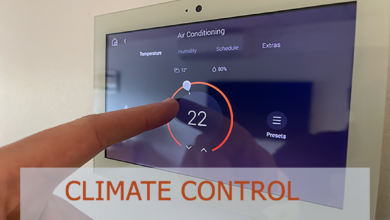Geothermal Energy: All you nedd to know

Geothermal Energy
Geothermal energy is that buzzword you would probably hear bandied about when people discuss renewable forms of energy. To state it in simple words, geothermal energy is heat energy that is conserved within the Earth’s internal layers.
This natural heat can be used for the generation of electricity, heating of homes, and enormous power for industrial operations. GE is a reliable power source that has been used for many centuries, although it is not as famous as solar and wind energies.
The idea of drawing upon the heat of the Earth is certainly not new; ancient civilizations had already used hot springs for bathing and heating. By the start of the 20th century, geothermal energy had been harnessed to generate electricity. Today, it constitutes an integral part of the renewable energy mix in many countries.
How Geothermal Energy Works
The Science Behind GE
Geothermal energy, in its most basic form, involves the concept of heat transfer. The core of Earth is very hot about 9,932°F, 5,500°C. This heat naturally moves outward to the Earth’s surface. By punching into the crust of Earth, it is possible to tap this heat for many uses.
Different Types of Geothermal Power Plants
There are three main types of geothermal power plants: dry steam, flash steam, and binary cycle. Dry steam plants are the oldest type and use steam directly from the geothermal reservoir to turn turbines. Flash steam plants pull hot water from the Earth and convert it into steam to drive turbines. Binary cycle plants are more modern and use a secondary fluid with a lower boiling point than water, which vaporizes and drives the turbine.
Challenges and Limitations
Geographic Limitations
However, despite this, geothermal energy is not without its own set of challenges. The main one is the geographic limitation. Geothermal resources are unevenly distributed globally. They are normally found in areas that have the highest rates of tectonic activity: for example, along the Pacific Ring of Fire.
Advantages OF GE
- Environmental Benefits
Among the most important benefits associated with the use of geothermal energy is that it has almost no environmental impact. Unlike fossil fuels, geothermal energy contributes little towards the emission of greenhouse gases, providing an excellent choice for someone willing to reduce his carbon footprint and save the planet.
- Economic Advantages
What’s more, geothermal energy is also good for your pocket, other than the planet. Once constructed, the ongoing operational costs of a geothermal plant are very low. In addition, it generates power continuously, unlike solar and wind, and therefore offers less variability on a power grid, which reduces the need for backup energy.
- Technical and Economic Challenges
The initial costs related to establishing a geothermal plant can be very high. Various special equipment and expertise are needed to reach the geothermal reservoirs deep inside the Earth. There is also some risk in drilling, like the triggering of small earthquakes.
- Electricity Generation
Geothermal energy is used most commonly to produce electricity. GP stations turn the heat of the earth into electrical energy to feed it into the grid for several uses in homes and businesses.
Geothermal energy and the environment
Low emissions and environmental impact
One of GE’s unique features is its low-emission design. Geothermal power plants emit only a fraction of the carbon dioxide that fossil power plants emit. In fact Greenhouse gas emissions are so low that GE considers them one of the cleanest sources of energy.
Geothermal Energy Applications
Direct Use in Heating
Geothermal power is not used solely for generating electricity but also finds an application in direct heating, that is, heating buildings, greenhouses, or even swimming pools. Direct use of GE is also highly efficient and can do much to reduce heating costs.
Sustainability of Geothermal Resources
The keynote of geothermal energy is its continuity. As long as the Earth exists, there will be heat, definitely, beneath its surface. This makes geothermal energy a resource of long-term sustainability for generations to come.
Global Adoption of Geothermal Energy
Countries Leading in Geothermal Energy Production
Some of the leading countries in GE production include Iceland, the United States, and the Philippines. A very good example is Iceland, which can boast that almost 90% of its homes are heated by geothermal energy.
Case Studies of Successful Geothermal Projects
Historically, there have been countless global geothermal projects that have been successful. For example, the Geysers in California have prided themselves on being the world’s largest geothermal field, having produced electricity since the 1960s. Additionally, Iceland’s Hellisheiði is one of the world’s largest GP stations, delivering both electric power and hot water to the capital city, Reykjavik.
Geothermal Energy Future Trends
Technological Innovations
The future for geothermal energy is bright, with constant technological innovation that might even boost it in terms of how efficient and accessible it is. Such innovation may apply, especially in the case of enhanced GS, a new technology that could unlock the geothermal potential of areas where traditional geothermal resources are not available.
Potential for Growth
Just as the doors are open to the world of renewable sources, the chances for developing GE sources remain not capped by much. If appropriately invested in and supported by good policies, GE will play a much bigger role in the world’s energy mix.
How Geothermal Energy Compares to Other Renewable Energy Sources
Comparison with Solar and Wind Energy
Relatively less discussed in the context of solar and wind, GE has some peculiarities associated with it. Unlike both solar and wind, which are done based on the weather conditions, it is available around the clock. It is a much more reliable source of energy, more so for the regions where the unpredictability of weather occurs.
Cost-Effectiveness and Reliability
Geothermal energy is equally cost-effective in the long term. The usually high installation cost is compensated for by the steady output of energy and low operation costs, hence allowing economic viability. On reliability, geothermal energy ranks much higher than many other sources of renewable energy, since it provides a steady stream of power unaffected by the time of day or weather.
The Role of Geothermal Energy in Combating Climate Change
Contribution to Reducing Greenhouse Gas Emissions
Geothermal energy has a critical role it can play in the fight against climate change. This substitution of GE for fossil fuel resources can surely drive down global greenhouse gas emissions by a large margin. This in particular plays a vital role in countries trying to meet their set climate goals under the Paris Agreement.
Integration into National Energy Strategies
Recognizing the role of GE, several countries have begun integrating this source into their national energy strategies. Thus, while the mentioned countries contribute to reducing their carbon footprint, they also increase their energy security.
FAQs
What are the main types of geothermal power plants?
The three main types are dry steam, flash steam, and binary cycle power plants, each utilizing geothermal resources in different ways to generate electricity.
Is geothermal energy cost-effective?
Yes, while the initial setup costs can be high, the long-term savings and low operational costs make geothermal energy cost-effective.
Can geothermal energy be used in residential homes?
Absolutely, geothermal heat pumps have become extremely popular choices in heating and cooling homes because of the efficiency they provide in energy use toward the control of temperature.
What are the environmental impacts of geothermal energy?
Geothermal energy has negligible environmental impacts, a low level of emission, and a low land footprint area.
How sustainable is GE in the long term?
It is the most sustainable form of energy as it relies on Earth’s heat, lasting for billions of years.
READ MORE ABOUT HYDROPOWER HERE
Geothermal Energy Investing
Opportunities for Investors
On the other hand, the fact that this is a highly unraveled niche of renewable energy could be an especially propitious opportunity for those interested in investing in it. Demand for geothermal projects will rise with increasing demand for clean sources of energy, possibly leading to extremely high returns on investment early in the process.
Government Incentives and Policies
Various governments from all over the world are providing incentives to geothermal projects through tax holidays, grants, and subsidies. All these mechanisms serve to decrease costs for developers while they attract investment in start-up projects.
Geothermal Energy in Residential and Commercial Use
Heating and Cooling Systems
Geothermal energy is used in not only power stations of great capacity but also for heating and cooling in residential use and commercial buildings. The technology of using geothermal heat pumps is becoming more and more popular since the technology is very low in cost and environmentally friendly.
Benefits for homeowners and businesses
GS offers many benefits for home and business owners. They provide consistent heating and cooling, lower energy bills, and are less expensive than traditional HVSCs.
GE’s future in developing countries
GE’s outlook in emerging markets
Many developing countries will greatly benefit from the application of geothermal energy. Because many countries are located in areas where tectonic plate boundaries exist, there is actually great potential for geothermal development. That would certainly give them a high and reliable basis of energy and further promote economic development.
Conclusion
Geothermal energy is an underutilized, powerful resource that can and will play an important role in transitioning to renewable energy sources on a global scale.
It represents an excellent option to help reduce dependence on fossil fuels not just for their minimal environmental impact, cost-effectiveness, and reliability but also because of advanced technology improvements and geothermal projects that take the development to one country after another. Hence, the prospects for GE are really bright.




